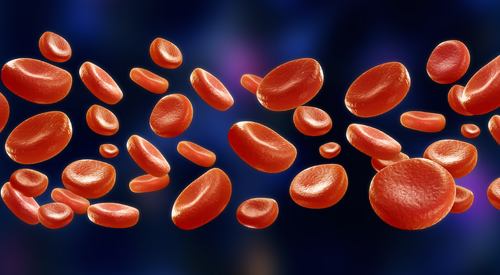Bladder-Preserving Options in Bladder Cancer
Research is focusing more on the realities of a cystectomy and how to improve treatment options.
Prostate cancer. Urologist examines male genitourinary system. Diagnosis of prostatitis or sexual dysfunction. Andrologist engaged in prevention and treatment of prostate gland diseases: © buravleva_stock - stock.adobe.com

In 2020, an estimated 212,536 bladder cancer-related deaths and 573,238 new cases of bladder cancer were reported worldwide.1 Neoadjuvant chemotherapy (NAC) followed by radical cystectomy (RC) with urinary diversion is considered the gold standard for treating muscle-invasive bladder cancer (MIBC) and select high-risk non-MIBC. With standard treatment, 5-year overall survival (OS) is around 70%. A growing number of trials are comparing the outcomes of bladder-preserving options, such as combined modality therapy (CMT) or trimodality therapy (TMT), with RC outcomes, with an added focus on a patient’s quality of life.2,3
“Great strides have been made in understanding the pros and cons, risks and benefits of invasive procedures, surgeries, and treatments in the advanced cancer and palliative care setting,” explained Lindsay Diamond, MSN, AGNP-C, AOCNP, in an interview with Oncology Nursing News. “When there is potential for cure on the table, we tend to let that rule our recommendations for patients. However, not everyone with MIBC needs to have their bladder removed.”
Diamond is a nurse practitioner and clinical program manager for the clinical research support unit at Icahn School of Medicine at Mount Sinai in New York, New York. Working with renowned bladder cancer oncologist and researcher Matthew D. Galsky, MD, Diamond and their team are wrapping up a trial to develop strict criterion for whether a patient achieves complete clinical response (cCR) after NAC (no evidence of residual cancer on imaging and urine cytology, or cystoscopy), and, ultimately, if those who do can avoid RC altogether.4
Radical Cystectomy
RC is a complex operation involving the bladder, urinary tract, intestines, and pelvic lymph nodes. “This is a morbid surgery,” said Diamond, “with high risk of complications and lifelong quality-of-life and health implications.” During preoperative or intraprocedural imaging, findings suspicious for cancer in the regional setting may be found, and adjacent organs will need to be removed. “The procedure can become much more involved once in the [operating room],” according to Diamond. “Men may need a cystoprostatectomy. Women may need pelvic exenteration.”
RC is preceded with standard cisplatin-based combination neoadjuvant chemotherapy. “What we are really doing with NAC is getting rid of microscopic metastatic disease while we can,” said Diamond. “We want to get those cells that broke free from the bladder and are floating around to increase the chance of a cure.”
Not everyone is eligible for NAC, including patients with impaired kidney function. As people age, the incidence of kidney disease due to diabetes, hypertension, and other conditions increases. In these cases, the standard of care is bypassed, and patients either go directly to surgery without NAC, or they receive an alternative treatment modality. Upfront cystectomy increases the risk of recurrence, as microscopic disease may be present.
Urinary Diversion
Lindsay Diamond, MSN, AGNP-C, AOCNP

Urinary diversion is managed with either an ileal conduit (IC) and external collection device (incontinent diversion), or the replacement of the bladder with an orthoptic neobladder (NB) reconstruction (continent diversion).5 Diamond first explained the latter: “Using part of the bowel, the surgeon shapes a spherical faux bladder, which is then anastomosed to the patient’s existing ureters and urethra. The NB approach gives patients control over urinary elimination—at least to some extent.”
Since urine collection and storage are internal, an external collection device is not needed. However, due to differences in the muscular lining of the bowel and bladder, patients will have more difficulty urinating and emptying the bladder completely. Self-catheterization may be needed multiple times a day as retention is common. Other complications include ileus, urinary tract infection (UTI), urinary tract obstruction, urosepsis, bleeding, and infection. Long-term complications tend to be genitourinary related and occur more often with NB than IC.5
Despite the advantages of bladder reconstruction, this diversionary method is not suitable for everyone. To be eligible, a patient must have a lower risk of recurrence, an absence of cancer in the urethra, no history of inflammatory bowel disease or bowel surgery, adequate renal function, and no prior radiation treatment to the area. Patients who prefer NB tend to be younger, fitter, and healthier, as this choice allows a less-disrupted lifestyle than IC and, therefore, a higher quality of life (QOL).
IC is the most common method of urinary diversion following RC and is typically recommended for older patients, those with comorbidities or cancer involving the urethra, or poor kidney function, or who have difficulty preparing for neobladder surgery. To form the conduit, the surgeon uses part of the small intestine, which is anastomosed to the ureters on one end and fashioned into a stoma on the other end.
With an IC, urine drains continuously from the ureters through the stomal opening into an external collection pouch. Patient education includes the care and management of the stoma and pouch, in addition to identifying the signs and symptoms of a UTI. Complications related to an IC include a higher likelihood of a UTI, bleeding or excoriation around the stoma site, and a greater probability of hernia.
Bladder removal and urinary diversion have a clear impact on QOL.6 Deciding which method of urine collection and elimination—IC or NB—will provide the most satisfaction for the patient is a key component of surgical consultation. Patients may be unfit for RC and urinary diversion due to their advanced age, a disease, or their performance status, or they may decline the procedure, preferring quality over quantity of life.6
Bladder-Preserving Therapy
CMT, also referred to as TMT, is an alternative treatment for patients who decline cystectomy, or are unfit for surgery and NAC but have the potential for a cure.3 Candidacy is based on the patient’s disease type, stage, and overall health. Therapy consists of a combination of 3 types of treatment, beginning with a maximal transurethral resection of bladder tumor (TURBT). For this procedure, the urologist goes into the bladder through the urethra with a cystoscope and removes all visible cancer. Any tumors seen during the cystoscopy are resected followed by chemoradiation. OS for CMT is reported to be around 78%.3
Compared to RC and urinary diversion, CMT is less invasive, yet it’s also less informative from a scientific standpoint. With RC, the pathologist has the complete bladder to evaluate for residual cancer. Without pathologic inspection of the entire organ, that additional information to help determine chemotherapy and radiation treatment is missing. Another downside of CMT pertains to management of a recurrence. With RC, patients have the option to get radiation if a recurrence occurs in the area where the bladder used to be. Radiation can cause scarring, fibrosis, and other changes in the pelvis. If radiation is done upfront, salvage cystectomy may no longer be an option to treat a recurrence.
Patient Advocacy and Support During CMT
Aside from coordinating and managing chemotherapy, radiation, and the subsequent adverse effects, there’s the crucial management of CMT to consider. Unlike RC, which is a onetime surgery with a 5-day hospital stay, CMT requires numerous visits a week for multiple weeks. Patients may have childcare or transportation needs. They may have to take time away from work, which, in turn, might impact their job and income. “CMT is a total burden on almost every aspect of life and only gets more difficult the more socially disenfranchised the patient becomes. Most patients are older, and treatment ramifications are not only physical but also psychological,” said Diamond.
Nurses serve as the center of care coordination and advocacy for patients. “There are many moving parts with CMT, and patients need an advocate to hold their hand along the way,” said Diamond. “Even the most affluent patients with access to everything and the best health literacy need a nurse advocate.” CMT is a time-consuming treatment. Radiation therapy is scheduled daily for 7 weeks and chemotherapy multiple times a week. “It’s more burdensome, impacting childcare, work, and the travel situation. Patients may opt for RC because they want the cancer out and peace of mind that it’s done with versus a prolonged 7 to 8 weeks of treatment with CMT.”
"Super-Promising" Progress
Studies show that up to 40% of patients receiving NAC followed by RC achieve pathologic complete response (pCR).7 In other words, when the pathologist examines the bladder after cystectomy, no evidence of cancer is found.7 Patients who achieve pCR have a greater chance of long-term survival, yet when informed their cystectomy specimen shows no residual cancer, some react to the good news with utter disappointment.
“No amount of education or experience with oncology prepared me for [when] I would tell a patient whose postoperative pathology report showed no residual cancer,” Diamond said, “only for them to have one response: ‘Then why did I have my bladder removed?’ ” It’s a question researchers are diligently working to answer.
Matthew D. Galsky, MD

Galsky’s previously mentioned trial was “super controversial” at the time, Diamond stated. “We really had to educate patients about the risks of forgoing cystectomy. All the data we knew thus far [showed] cystectomy could lead to a cure.” Patients enrolled in the trial received 4 cycles of gemcitabine, cisplatin, and nivolumab (Opdivo) following maximal TURBT and then were clinically restaged. Patients were either:
- eligible to forgo RC and receive nivolumab every 2 weeks for 8 months, followed by surveillance, or
- recommended for RC.
After a median follow-up of 27 months, 100% of the trial participants in the cCR group were alive, 96.6% had no metastasis, and 72.2% had an intact bladder.4 These results are indeed promising, as researchers are closing in on having the ability to determine which patients can potentially avoid cystectomy.
Galsky’s team is currently conducting a second trial iteration for patients meeting eligibility criteria who cannot receive NAC. Participants receive 2 cycles of pembrolizumab (Keytruda) after maximal-TURBT, followed by restaging with urine cytology, cystoscopy, and scanning. Patients who achieve cCR have the option to forgo RC.8
“This is where much of our research focus has been over the last 6 years or so,” said Diamond. “The numbers are not yet in for the current trial but those from the first trial are obviously super-promising. I can tell you I feel good at follow-up when a patient tells me, ‘I still have my bladder!’ I feel good 5 years later when they’ve been cured and the patient again says, ‘I still have my bladder!’ I think we sometimes downplay how much QOL matters to patients. For many, quality is comparable or preferable over quantity of life. The experience of patients from our trial speaks to that.”
References
- Sung H, Ferlay J, Siegel RL, et al. Global cancer statistics 2020: GLOBOCAN estimates of incidence and mortality worldwide for 36 cancers in 185 countries. CA Cancer J Clin. 2021;71(3):209-249. doi 10.3322/caac.21660
- Omorphos NP, Piedad JCP, Vasdev N. Guideline of guidelines: muscle-invasive bladder cancer. Turk J Urol. 2021;47(suppl 1):S71-S78. doi:10.5152/tud.2020.20337
- Lemiński A, Michalski W, Masojć B, et al. Combined modality bladder-sparing therapy for muscle-invasive bladder cancer: how (should) we do it? A narrative review. J Clin Med. 2023;12(4):1560. doi:10.3390/jcm12041560
- Galsky MD, Daneshmand S, Lewis SC, et al. Co-primary endpoint analysis of HCRN GU 16-257: phase 2 trial of gemcitabine, cisplatin, plus nivolumab with selective bladder sparing in patients with muscle-invasive bladder cancer (MIBC). J Clin Oncol. 2023;41(suppl 6):447. doi:10.1200/jco.2023.41.6_supp.447
- Demaegd L, Albersen M, Muilwijk T, et al. Comparison of postoperative complications of ileal conduits versus orthotopic neobladders. Transl Androl Urol. 2020;9(6):2541-2554. doi:10.21037/tau-20-713
- Chang NT, Chang YH, Huang YT, Chen SC. Factors associated with refusal or discontinuation of treatment in patients with bladder cancer: a cohort population-based study in Taiwan. Int J Environ Res Public Health. 2021;18(2):618. doi:10.3390/ijerph18020618
- Lee HW, Kwon WA, Nguyen LNT, et al. Approaches to clinical complete response after neoadjuvant chemotherapy in muscle-invasive bladder cancer: possibilities and limitations. Cancers (Basel). 2023;15(4):1323. doi:10.3390/cancers15041323
- Pembrolizumab in muscle-invasive bladder cancer. ClinicalTrials.gov. Updated January 12, 2024. https://clinicaltrials.gov/study/NCT05406713





